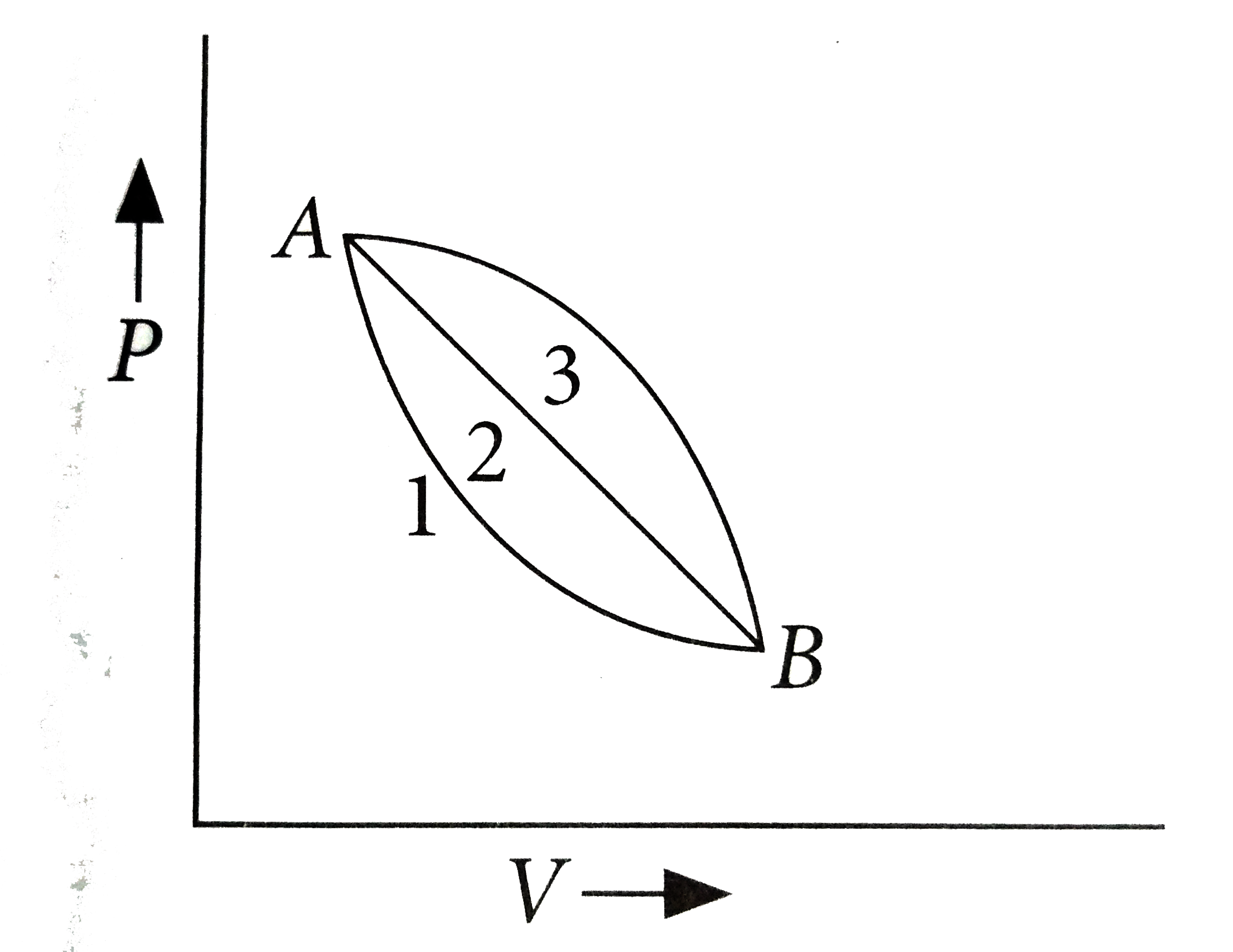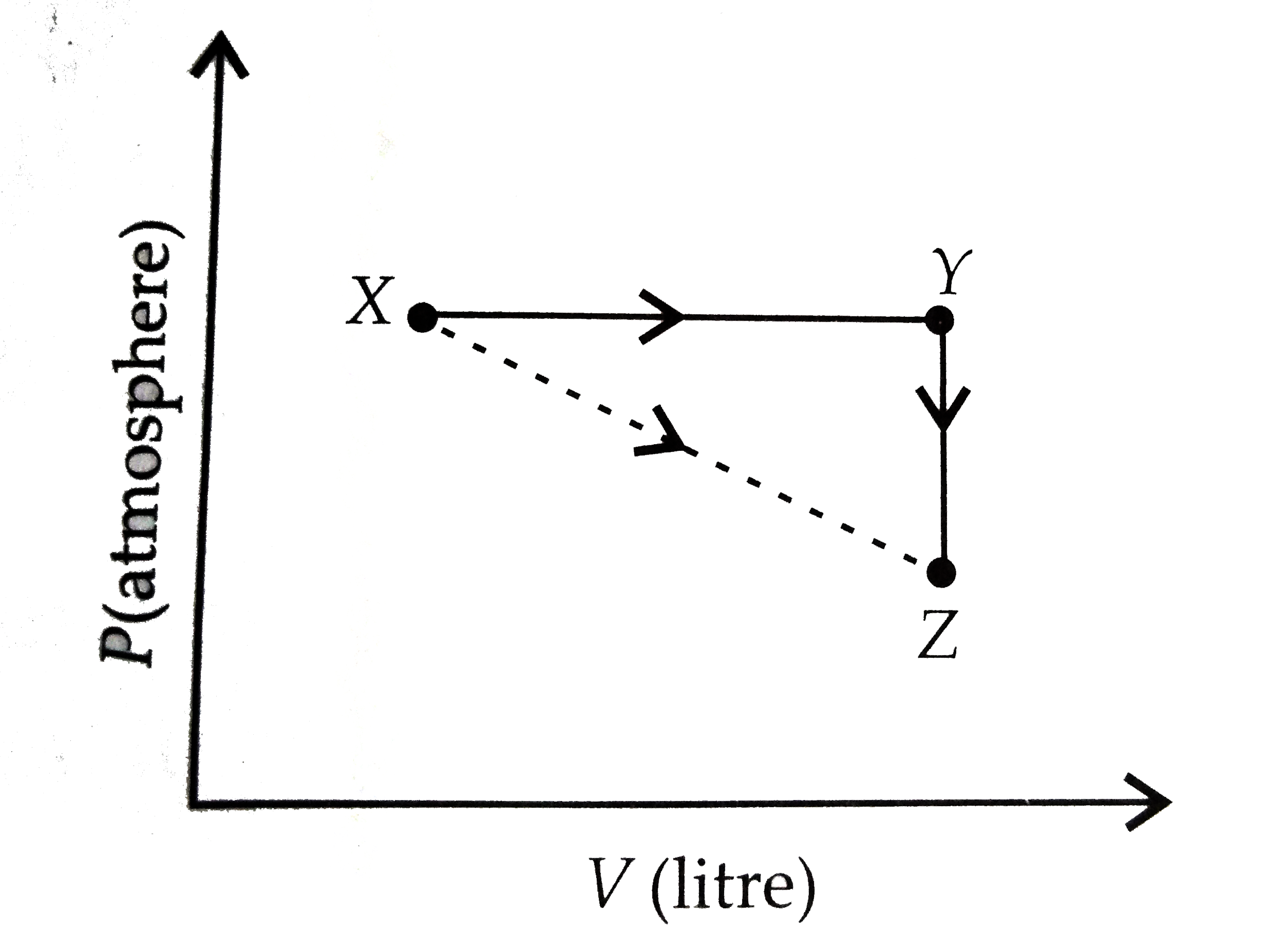Complete Solutions to Higher Order Thinking Skills of chapter THERMODYNAMICS of Class 11 book with complete answers and questions
| Class 11 | CHEMISTRY |
| Chapter | THERMODYNAMICS |
| NCERT FINGERTIPS | Higher Order Thinking Skills |
| Number Of Questions | 8 |
| Academic Year | 2023-24 |
A ideal gas does work on its surroundings when it expands by 2.5 L against external pressure 2 atm. This work done is used to heat up 1 mole of water at 293 K. What would be the final temperature of water in kelvin if specific heat for water is `"4.184 Jg"^(-1)"K"^(-1)`?
View SolutionA given mass of gas expands from state A to state B by three paths 1, 2, and 3 as shown in the figure :

If `w_(1),w_(2)and w_(3)` respectively, be the work done by the gas along three paths, then
View SolutionFor an ideal gas, consider only P-V work in going from an initial state X to the final state Z. The final state Z can be reached by either of the two paths shown in the figure. Which of the following choice(s) is(are) correct? [Take `DeltaS` as change in entropy and w as work done]

View Solution`H_(2)` gas is mixed with air at `25^(@)C` under a pressure of 1 atmosphere and exploded in a closed vessel. The heat of the reaction, `H_(2(g))+(1)/(2)O_(2(g))rarrH_(2)O_((v))` at constant volume, `DeltaU_("298 K")=-"240.60 kJ mol"^(-1)` and `C_(V)` values for `GH_(2)O` vapour and `N_(2)` in the temperature range `"298 K and 3200 K are 39.06 JK"^(-1)"mol"^(-1) and "26.40 JK"^(-1)"mol"^(-1)` respectively. The explosion temperature under adiabatic conditions is
(Given : `n_(N_(2))=2)`
View SolutionBond dissociation enthalpies of `H_(2(g)) and N_(2(g))` are `"426.0 kJ mol"^(-1)` and `"941.8 kJ mol"^(-1)`, respectively, and enthalpy of formation of `NH_(3(g))" is "-"46 kJ mol"^(-1)`. What are the enthalpy of atomisation of `NH_(3(g))` and the average bond enthalpy of `N-H` bond respectively ( in kJ `"mol"^(-1)`)?
View SolutionConsider the following two reactions :
(i) `"Propene "+H_(2) rarr "Propane, "DeltaH_(1)`
(ii) `"Cyclopropane"+H_(2)rarr"Propane, "DeltaH_(2)`
Then, `DeltaH_(2)-DeltaH_(1)` will be
View SolutionA gaseous system is initially characterised by 500 mL volume and 1 atm pressure at 298 K. This system is allowed to do work as
In isobaric conditions it expands to 800 mL resulting a decrease in pressure and temperature to 0.6 atm and 273 K respectively.
(ii) In adiabatic conditions it is allowed to expand upto 800 mL and results a decrease in pressure and temperature to 0.6 atm and 273 K respectively.
If Gibbs energy change in (i) is `DeltaG_(a)` and in (ii) is `DeltaG_(b)`, then what will be the ration of `(DeltaG_(a))/(DeltaG_(b))`?
View SolutionWhat will be `DeltaG` for the reaction at `25^(@)C` when partial pressures of reactants `H_(2), CO_(2),H_(2)O and CO` are 10, 20, 0.02 and 0.01 atm respectively. (Given : `G_(H_(2)O)^(@)=-"228.58 kJ, "G_(CO)^(@)=-"137,15 kJ, "G_(CO)^(@)=-"394.37 kJ"`.)
View Solution
Higher Order Thinking Skills questions and complete solutions for chapter THERMODYNAMICS of MTG CHEMISTRY (HINGLISH) of Class 11